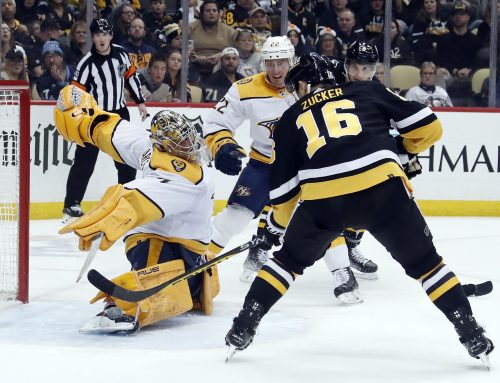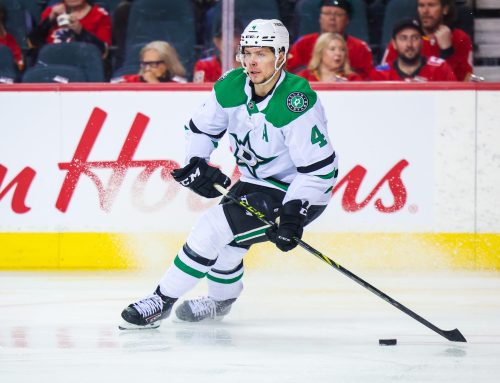
It’s Thursday again, and that means another Capped article. This week should be a fun one, as I am finally putting out in public some of the results from my efforts to predict NHL free agent contracts. For those of you that are unaware, I have been working on this project off and on to create a model where I can input a player’s stats, and I will have a result spit out for a projected cap hit, and a length of a contract. The model has gotten to the point where I am comfortable enough putting some numbers out to the public, so that we can all benefit from it, and also discuss whether we think some of these numbers are low or high.
I will preface that these numbers are not what I think players will sign for; that is a completely different undertaking. The numbers in the link to follow are built from matching historical data to create formulas with which we can output the expected contract of a player based on comparable outputs and situations. That means the best description for these numbers would be “market value.”
Without further ado, here are my 2019 Free Agency Predictions for the top 120 free agent skaters (by my own choosing).
****
Benchmarking
Following up on the label of market value from above, that seems to be where this list could be put to the most use in the fantasy world. For example, if you are certain that someone on the list is going to get a lot more money than is listed there, then you are likely best off selling them, as they will be paid above what the market value usually is for a similar asset. On the flip side, if someone is predicted to get a much larger contract than you think possible, they would become a buy. However, as there are three sides to every story, some players will end up getting very close to the amount projected for them (even a broken clock is right twice-a-day). With that in mind, you can use this (as I do), to help planning offseason moves in your salary cap leagues, by giving you a ballpark figure to work with. Let’s take a look at an example of each:
Predicted too low:
Charlie McAvoy (D) – Boston Bruins
Predicted Cap Hit: $2,371,136
McAvoy is a solid NHL player, and he may have a Stanley cup ring in short order, however his contract after this season is likely going to outweigh a lot of the positives of what he can bring to the table. If a player like Shea Theodore can command $5.2 million immediately after his entry-level deal expires, then McAvoy is likely thinking he could be in line for the same. My model has him earning less than half of that, and if he gets more than $4 million per year on his new deal, then I am staying far away.
For those who will just take a look at McAvoy’s number and laugh, it is in part due to his low games played. Had he played a few more games, and in them, hit a few extra close benchmarks for other stats, then his numbers drastically change. I tried upping his numbers a little in the model, and it puts his predicted numbers up closer to the $6 million we could expect.
Predicted too high:
Kyle Connor (LW) – Winnipeg Jets
Predicted Cap Hit: $9,103,487
The first time I saw that number for Kyle Connor, I freaked out a little. I thought it was so outlandish that he could be projected so high, and that I would have to find where the bugs were in my system. It forced me to look more into Connor and his production/situation, and man is he ever a good player that doesn’t get talked about enough. Whatever he ends up getting this year, I would be happy with it as a fantasy owner (even though it may be a little more than some in the general public expect). Connor is way past a bridge deal, and he will surprise people by getting a bigger number than Laine this summer.
Wildcard to benchmark:
Jason Spezza (C/RW) – Dallas Stars
Predicted Cap Hit: $1,866,243
This ballpark for Spezza would represent a massive pay cut from his expiring AAV of $7.5 million, however, it makes sense after a disappointing season in which it was evident that the Stars forward had lost a step (or two). I am expecting the soon to be 36-year-old to end up on a short-term contract around the $2 million range. Like Patrick Maroon last summer, on a contract like this, Spezza could provide cheap and reliable forward depth for a contending team in a cap crunch. Adding a player like Spezza provides faceoff insurance, a boost to the second powerplay unit, and playoff experience (32 points in 44 career playoff games).
****
Salary and Term
I also wanted to dive back into the preface on the products of the predictions for what it means individually on the salary and term. Salary was the larger focus, as that matters more to general fans, as well as in fantasy cap leagues. Having a framework from which to base future thoughts on was the goal. With an initial number based on trends, we can then add in more analysis, and guesstimation to get closer to end up with realistic projections for any player of interest. Take Kevin Hayes for example: He is projected for a cap hit at just under $5 million, but with a shallow free agent market for centres, a team trading for his rights, and comparable players such as Brock Nelson and Paul Stastny setting the benchmark over the last year, it would be a surprise to see Hayes get under $6 million on the open market.
For the term, I haven’t spent as much time on it as I would like, and the way I have things set up right now, only a single estimate is provided. The purpose of having years in contract projections for cap leagues is not to have the exact numbers be correct, but more so to estimate who will be getting bridge deals vs long term extensions, and how those may then fit into future planning of your own fantasy salary cap space.
****
Postscript
I am more than willing to listen to tips, criticism, and comments on the undertaking, results, or whatever tickles your fancy. As of now, the list is 99 skaters long, so if there is someone missing or that you just want me to run through the system, let me know. You can find me on twitter @alexdmaclean.
****
Previous Capped articles:





 CHI
CHI BUF
BUF NYR
NYR TOR
TOR EDM
EDM PIT
PIT N.J
N.J L.A
L.A DET
DET CAR
CAR
